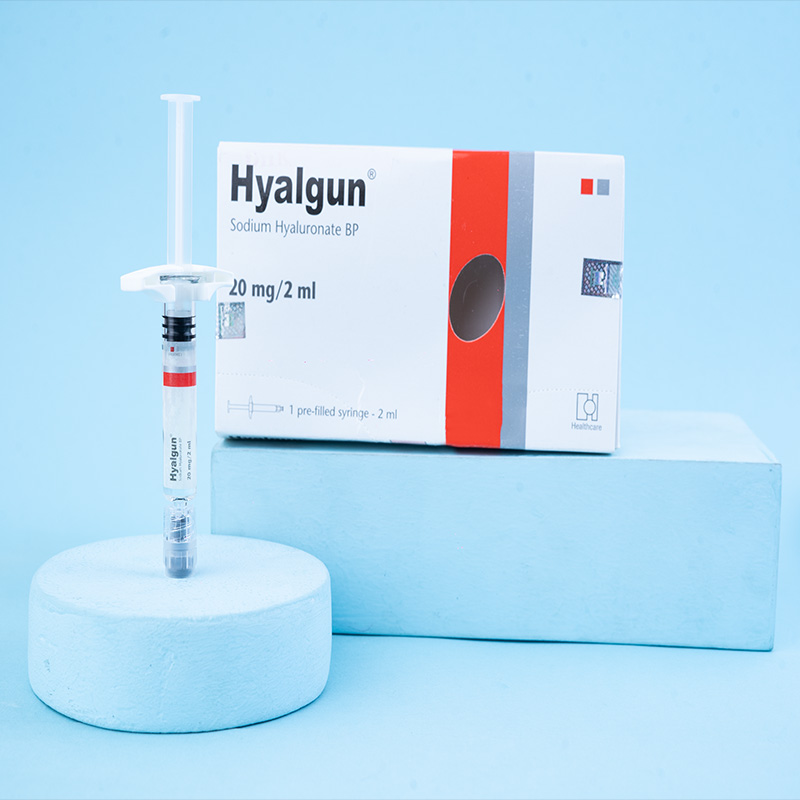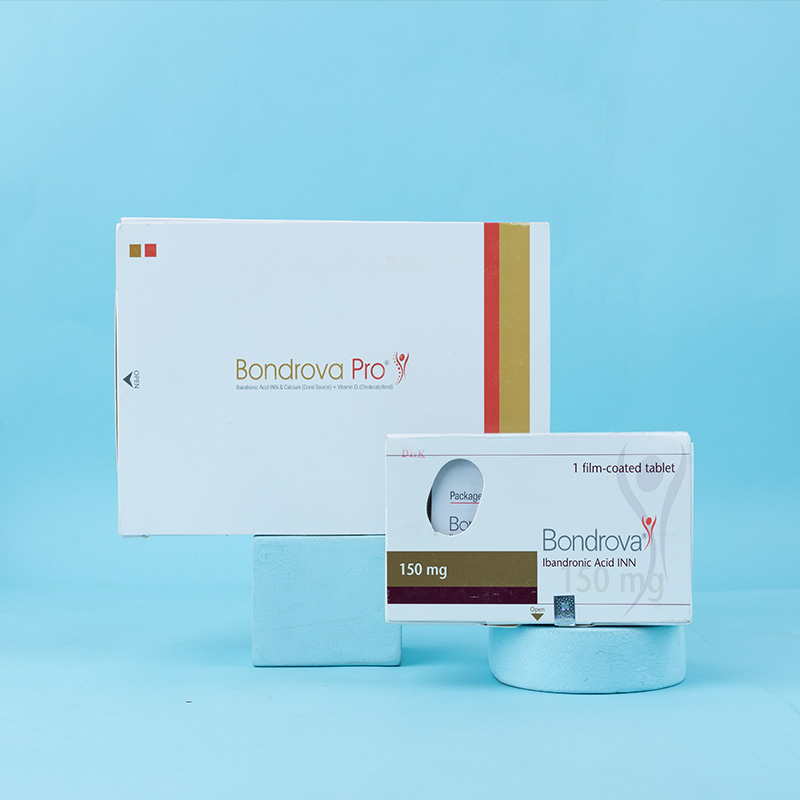Hyalgun® Injection: Each pre-filled syringe contains sterile, non-pyrogenic Sodium Hyaluronate BP 20 mg as a solution.

Sodium Hyaluronate is a viscous solution composed of a high molecular weight fraction of purified natural sodium hyaluronate in buffered physiological sodium phosphate, with a pH of 6.8–7.5. Hyaluronic acid is a vital component of the body's extracellular matrix, found in high concentrations in cartilage and synovial fluid.
Endogenous hyaluronic acid provides viscosity and elasticity to synovial fluid, which are fundamental for its lubricating and shock-absorbing properties. It is essential for the proper structure of proteoglycans in articular cartilage. In osteoarthritis, there is a reduction in both the quantity and quality of hyaluronic acid in synovial fluid and cartilage. Intra-articular administration of hyaluronic acid improves joint function in arthritic joints.

Sodium Hyaluronate is indicated for the treatment of pain in osteoarthritis (OA) of the knee in patients who have not responded adequately to conservative nonpharmacologic therapy or simple analgesics, such as acetaminophen. It may also be used as an adjunct in orthopedic surgery.

Sodium Hyaluronate is administered by intra-articular injection.
A treatment cycle consists of five injections given at weekly intervals.
Some patients may experience benefits with three injections given weekly.
Inject the full 2 ml into one knee. For bilateral treatment, a separate injection must be used for each knee.
Treatment may be repeated, typically after 6 to 12 months.
Instructions for Use/Handling
Sodium Hyaluronate is supplied as a single-use, ready-to-use sterile solution in a 2 ml pre-filled syringe.
Do not dilute the solution.
The syringe contents must be used immediately once opened.
Strict aseptic precautions should be observed during administration.
The injection site in the knee is typically approached laterally but can also be medial, depending on accessibility.
Steps:
Clean the injection site thoroughly with an antiseptic.
Remove trapped air bubbles from the syringe before administration.
Aspirate joint effusion (if present) using arthrocentesis with a 20-gauge needle before injection.
Confirm correct needle placement by aspirating a small amount of synovial fluid before slowly injecting Sodium Hyaluronate.
Advise the patient to rest the treated knee for a few hours, avoiding strenuous or prolonged weight-bearing activities (e.g., jogging or tennis) for at least 48 hours.
Unused solution should be discarded.

Common side effects include:
Pain, swelling, effusion, warmth, or redness at the injection site.
These symptoms are usually mild and resolve within a few days with rest and ice application.
Contraindications
Hypersensitivity to hyaluronate preparations.
Intra-articular injections are contraindicated in cases of active or past infections or skin diseases near the injection site to reduce the risk of septic arthritis.

Caution is advised in patients allergic to avian proteins, feathers, or egg products.
Remove joint effusion before injecting Sodium Hyaluronate.
Avoid strenuous activities for 48 hours post-injection.

Pregnancy: Safety and effectiveness have not been established in pregnant women.
Nursing Mothers: It is unknown if Sodium Hyaluronate is excreted in human milk.
Pediatrics: Safety and effectiveness have not been demonstrated in children.

Sodium Hyaluronate should not be administered or mixed with other intra-articular products.
Avoid using disinfectants containing quaternary ammonium salts, as hyaluronic acid can precipitate in their presence.

Store in a cool, dry place at a temperature below 25°C.
Protect from light.
Do not freeze.

Protect your joints: Avoid excessive stress on joints.
Stay active: Engage in regular physical activity but consult your healthcare provider before starting an exercise program.
Eat well: A healthy diet and maintaining a proper weight can reduce stress on your knees and lower the risk of other health problems.
Relax: Stress relief, such as warm baths, can ease muscle tension and aching joints.
Get enough sleep: Sleep can reduce pain and improve coping with osteoarthritis.
Exercise early in the day.
Avoid caffeine or alcohol at night.
Keep your bedroom dark, quiet, and cool.
Stay positive: Focus on strengths rather than weaknesses and make fitness and good nutrition a part of your lifestyle.








